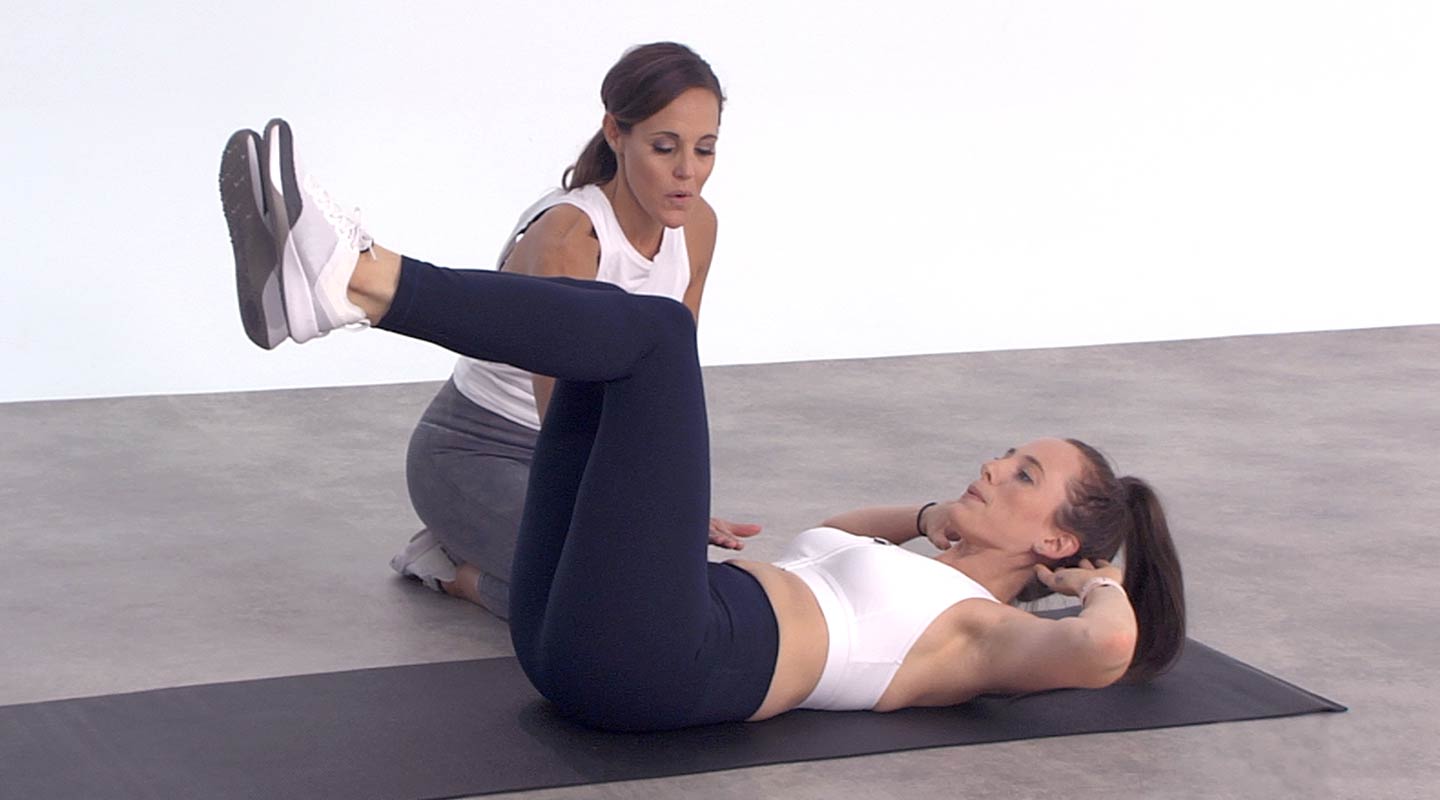
You might be surprised to discover that you retain your baby belly for weeks, even months, after giving birth. But if I might point out that your body has just housed a human being who demanded luxurious living quarters for nine months, and now your muscles and skin must adjust to the baby’s absence. The uterus needs a little while to contract into its pre-pregnancy size, and the organs — such as the stomach, intestines, and bladder — must shift back to their original locations, having been nudged out of place by the growing womb. On top of these changes, the increased blood flow and hormones from pregnancy need time to wane.
You were asked to gain 15 – 35 pounds over the course of nine months, and for some women the weight gain is considerably more. Within the first four to six weeks your postnatal body is considered “normal” in the fact that all systems are back to “normal.” But you will certainly notice weak or loose muscles, extra fat, fluid retention for breastfeeding, and sometimes some cellulite that did not reside on your thighs prior to getting pregnant.
Your body is going through many, many changes in those first few precious weeks. Consider this: by the end of your second trimester, your cardiac output increased blood volume by 30 – 40 percent and your heart rate sped up 10 – 15 bpm. But ALL systems decrease in activity within 2 – 3 DAYS of your baby’s arrival, returning entirely normal by 6 weeks postpartum. With the major change in blood volume and hormones, you might feel a “crash” within several days of giving birth.
You will see some immediate weight loss after birth. This weight comes from the baby, amniotic fluid, placenta, extra blood volume, breast tissue, fat storage, urination, and the uterus involution. The rest will of course take time. With all of this in mind, notice and appreciate how hard your body is working in the first few weeks postpartum — it is a delicate time for your body! Ease into exercise and only if it can be done pain free.
As long as your doctor or midwife is okay with it, you should be able to perform pelvic floor exercises shortly after delivery. Once your doctor or midwife has given you permission, resumption of exercise is encouraged. For vaginal deliveries this usually happens at 4 – 6 weeks postpartum, and for C-section deliveries at the 6 – 8 week postpartum mark. After you are cleared for exercise by your provider, you can slowly start to ramp up your workouts with a postnatal fitness program.
It’s important to manage your expectations in getting your body back. Around 9 – 12 months postpartum you might be back to your pre-pregnancy weight. Anything before that is simply unrealistic. We lay out the entire process and fitness guidelines in our Prenatal & Postnatal Exercise Guide.
Your body is remarkably adaptable, and your recovery to pre-pregnancy hormone levels, uterus size, and so on is a postpartum miracle. Your core muscles are just as adaptable, but you have to use all abdominal muscles to make them bounce back. We don’t expect to run a 10k race by not running, so we can’t expect our tummy muscles to bounce back by not exercising.
We need to train all four of our abdominal muscles (transverse abdominis, rectus abdominis, internal and external oblique), but the transverse abdominis (TA) is essential for getting a flatter tummy and to kick the “bread loaf” or “ab doming.” The TA is a thick layer of muscle that runs from hip to hip, wrapping around the torso from front to back. The muscle fibers run horizontally, similar to a corset or a weight belt. These muscles are your true core muscles, and strengthening them will give you power and tone your entire body — they are the ones we want to focus on to get those pre-mommy tummies back.
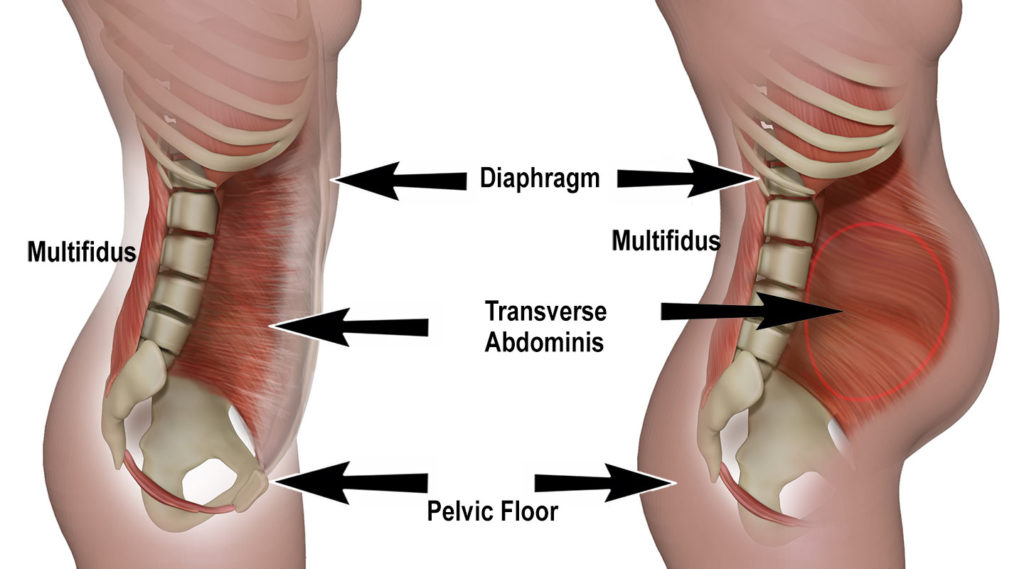
The pelvic floor, the bottom of your core, is a group of muscles that serve as a hammock to your pelvic organs. Any weight bearing activity (walking, running, jumping) increases the strain through the pelvic floor. This is amplified by a baby hanging lounging in and pushing through that hammock. Several of the tools and techniques that doctors use to assist you in giving birth — forced pushing, episiotomies, vacuums, and forceps — can contribute to pelvic floor dysfunction. Weakness and dysfunction in the pelvic floor can cause incontinence and pain.
Way too often I hear ladies say, “I’ve had babies, so peeing my pants is just part of life.” Let me tell you, my friends, this is not true. You can selectively retrain the pelvic floor to do its job. Now, to be fair I will say, there are times when these muscles and the bladder get damaged or injured and require more invasive intervention including surgery. If you are consistently working your pelvic floor and are getting no-where, please, please get in touch with a women’s health PT.
Learn to retrain your pelvic floor with exercises in our Prenatal & Postnatal Exercise Guide. >>
Regardless if you had a vaginal delivery or a C-section, your pelvic floor and the transverse abdominis acted as a sling to your baby for 9 months. This is why you need to train these specific muscles to get back the integrity and strength of your core before returning to traditional abdominal exercises.
Below you will find an effective core workout to help engage your core muscles after pregnancy and work toward creating the flat, strong midsection you desire. Don’t push too hard too soon, and get your doctor’s permission before performing!
As much as we want to focus on the core, your body also needs cardio + full body strength exercises. You can find these in our postnatal workout library.
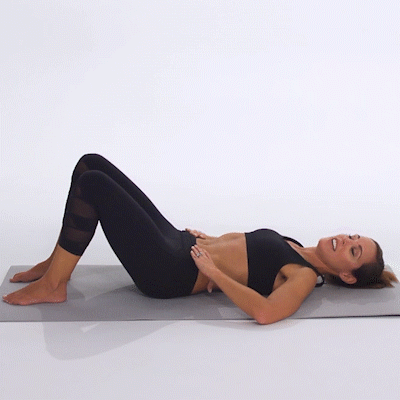
TRANSVERSE ABDOMINIS BRACING
Setup: Begin lying on your back with your knees bent, feet resting on the floor, and your fingers resting on your stomach just inside your hip bones.
Tighten your abdominals, drawing your belly button in towards your spine. You should feel your muscle contract under your fingers. Hold this position, then relax and repeat. If this exercise is brand new to you, keep your back flat against the floor, without titling your pelvis, and breath throughout the exercise. Do this exercise frequently throughout the day to train your brain to contract the TA in functional positions (lifting your child, unloading laundry, driving in the car, etc.) Perform for 30 – 60 seconds.
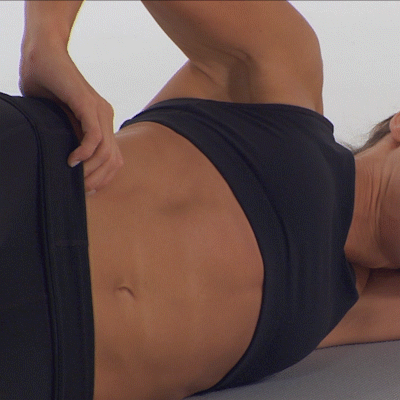
TRANSVERSE ABDOMINIS SIDE BRACING
Setup: Begin lying on your side with your knees bent, feet resting on the floor, and the fingers of your top hand resting on your stomach — just inside your hip bone.
Tighten your abdominals, drawing your belly button in towards your spine. You should feel your muscle contract under your fingers. Hold this position, then relax and repeat. Breathe. Perform for 30 – 60 seconds.
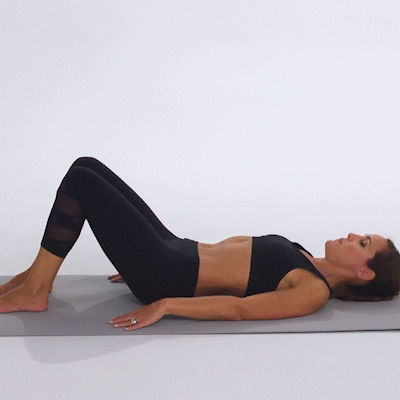
BENT KNEE FALLOUTS
Setup: Lie on your back with your knees bent and feet resting flat on the floor.
Tighten your abdominals. Without letting your hip bones move, slowly lower one knee out towards the floor – only as far as you can without your pelvis moving. Slowly return to starting position. Alternate with other leg, repeat. Brace your core so your pelvis is stationary. Perform for 30 – 60 seconds.
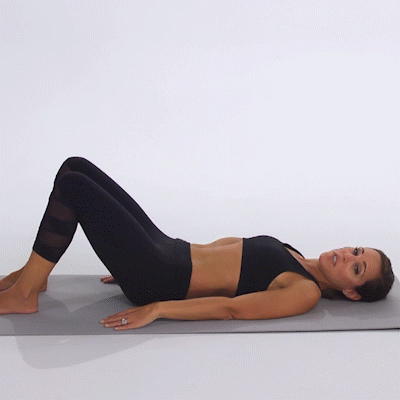
ROLLING BRIDGE
Setup: Begin lying on your back with both legs bent and your feet resting on the ground.
Tighten your abdominals. This will engage your deep core muscles to lift your hips off the ground into a bridge, hold. Lower by rolling down one vertebrae at a time, then repeat. Your body should be in a straight line at the top of the movement. Keep your hips level throughout the exercise. Perform for 30 – 60 seconds.